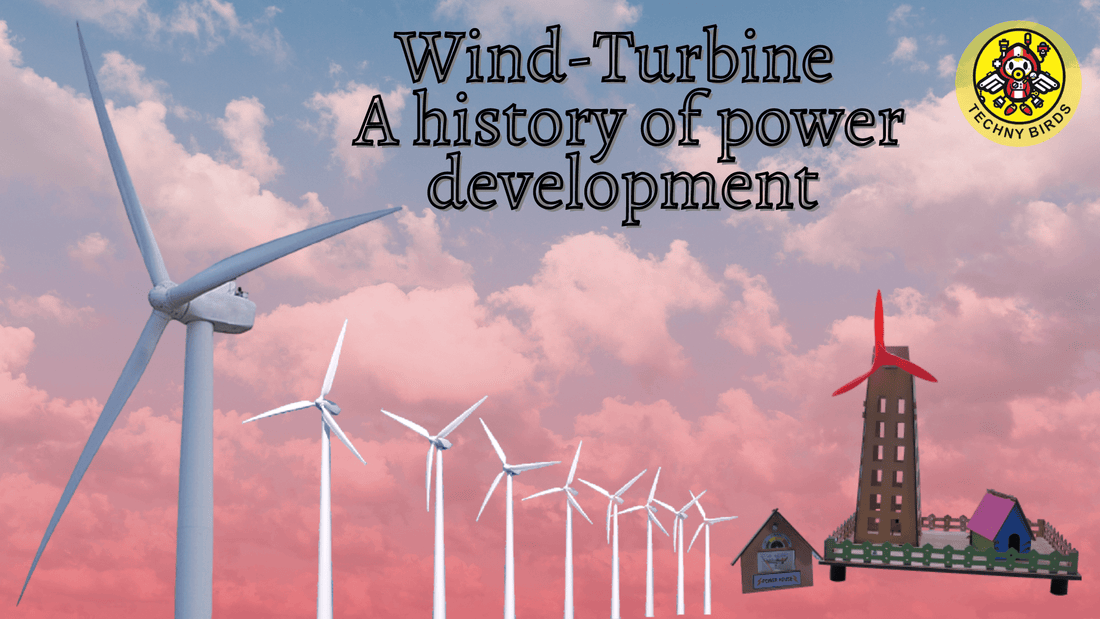
Wind-Turbine: A history of power development
Share
The Power of wind has played a very important role in the history of humans. Man has always tried to tame its power in different forms.it was used in crossing oceans through sails and different works through the windmill. Wind power can always be given credit for the development of human civilization. The earliest mention of wind power comes from the east: India, Tibet, Afganistan, Persia.
While searching the history of the windmill, one knows the first accepted establishment of the use of windmills; this was in the tenth century Persia. This was the region of Sistan, eastern Persia bordering Afganistan. It was known as wind and sand. winds of Sistan is famous rather notorious as it is said to reach 100 mph
The belief seems to be quite widespread that the Chinese invented the Windmill and have been using it for 2000 years. This might well be so, considering that they developed so many engineering artifacts. Now we can take the tenth century as the earliest known date for acceptable documentation.
Forbes apparently goes as far as to take the birthplace to be Sistan in the pre-Muslim era.
Wind turbines reached the apogee of utility in the 17th and 18th centuries. the industrial revolution lost its prominence to steam, oil, and gas engines. Because later provided better powered and compact machines. The wind turbines were a source of green and clean energy. This energy can be used in various ways for pumping water, grinding grains, pumping air to the organ, sawing wood, and more recently for electricity generation.
Type of windmills
The vertical axis Persian windmill: There have been suggestions that the Tibetans prayer wheel was the inspiration for the windmill, but although this is a possibility, the provenance of the prayer wheel itself is very doubtful.
The horizontal axis European windmill: Northwest Europe, particularly France, Germany, Great Britain, Iberia and the low countries.1086 A.D.5000 to 6000 mills were registered in England.
Design of horizontal axis European windmill:
- Post mill design
- Tower Mill design
Parts of windmill:
- Windmill sails Kwh
- Windmill controlled devices
The first wind-powered generation of electricity
One of the large-scale wind power for electric utility applications was taken in Russia in 1931 with the construction of a 100 kW 30m diameter wind turbine at Balaclava, on the black sea.it ran for two years or more and generated some 200000 kWh of power.
Windmill as a STEM Learning toy
Windmill is one of the most favourite toys of children. It uses its wind power to rotates its blades. Its blades are made in different forms and colours. these colourful moving wheels are major attraction of any fair. This toy is very popular among children from ancient times to very recent times.
The popularity of this toy can easily be understood, by its availability on different online market places like Amazon, Filip kart, Paytm, etc.
This science toy is helpful as a science model for different science exhibitions.
STEM learning classroom Exercise
Propeller design and its effects on the current generation
Relationship between wind speed and the current generation
Wind energy as clean energy
Let`s see how Windmill serves the purpose of a STEM Toy. It can be the best way to teach about the non-conventional energy form. How energy can be produced from strong wind. Other facts, which can be discussed like the design of the propeller. How the surface area of the propeller is important while it is used as a wind turbine.
Windmill by Technybirds can be used as STEM Learning equipment when it is used with a given Activity book. These activities are designed to provide an experimental framework to learn science.
These activities serve as a best-associated tool for learning. A child can memorize it with ease.
This is how complex topics are handled in STEM Learning. It enhances the cognitive ability of a child.
Hey kids are you looking for Educational learning toys
